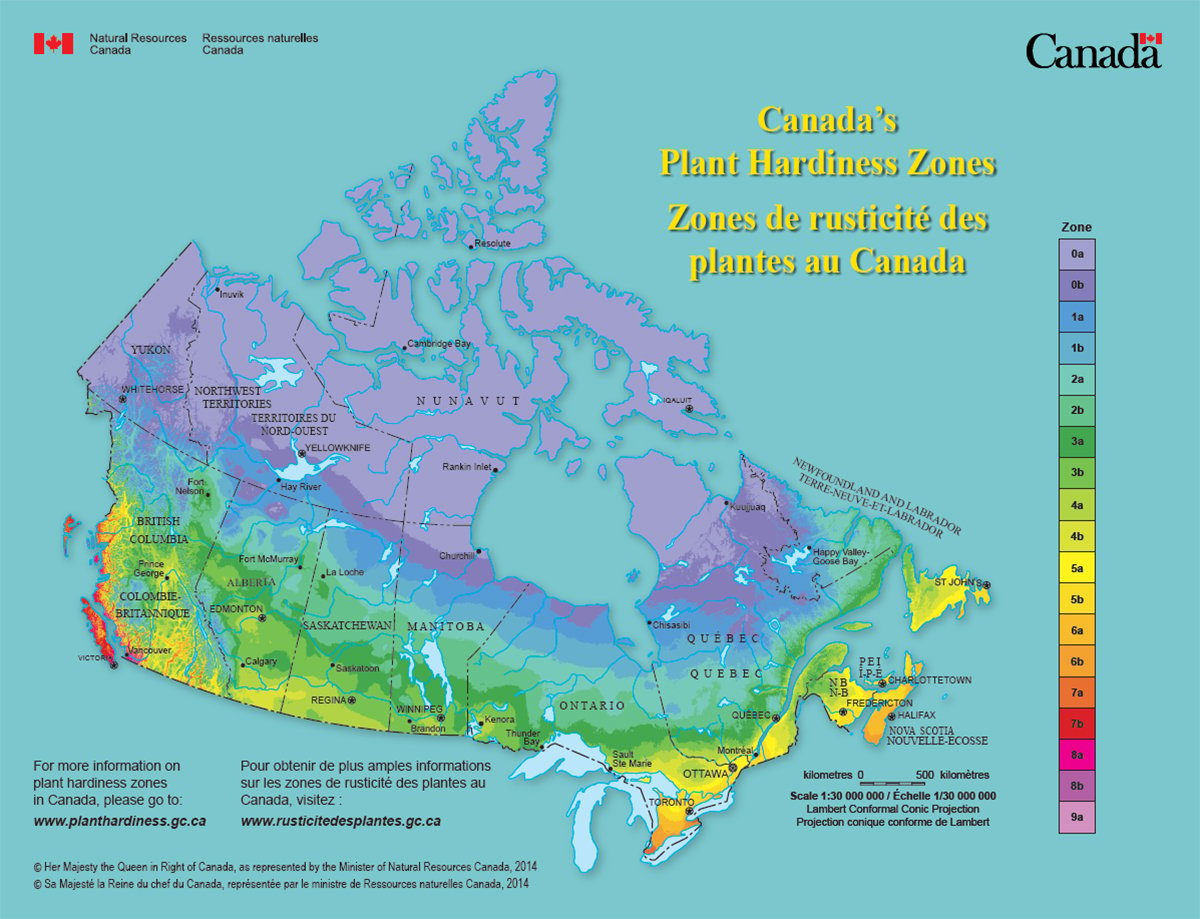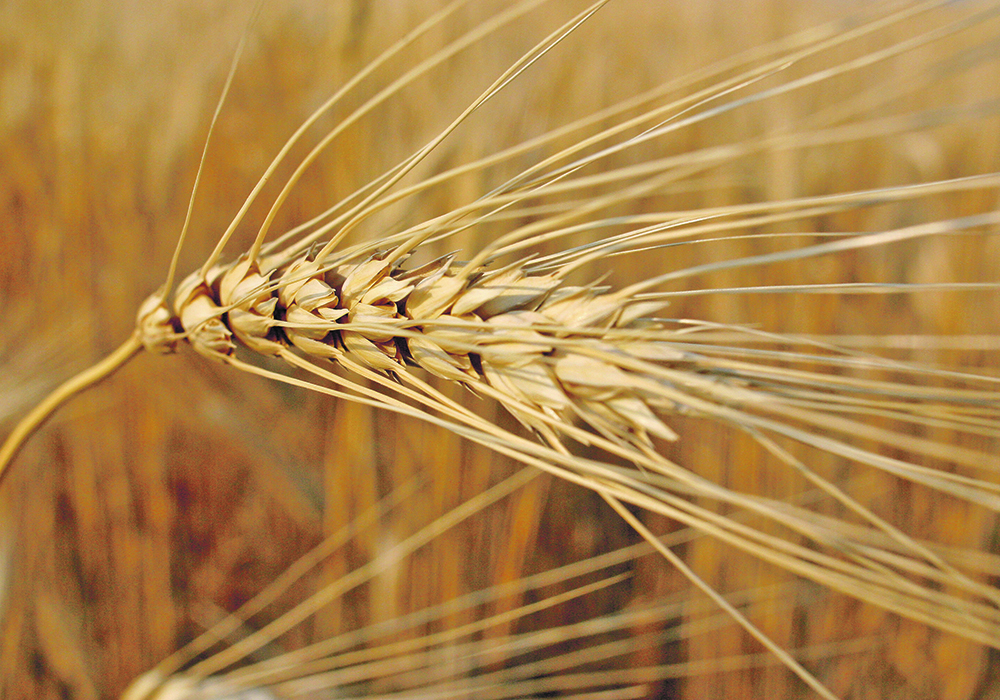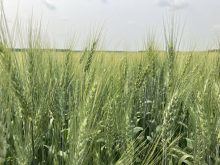Russia could drastically increase durum production this year, but could be shut out of the European Union market
SASKATOON — Canada could face stiff competition in durum markets in 2024-25 as Russia ramps up production.
Rossella Polito, an Italian durum farmer who posts as @spiga_dorata on the X social media platform, said the Russian Grain Union reports that farmers will plant 2.47 million acres of durum this year, double the size of last year’s crop.
She provided a link to a story from the Monocle.ru website stating that production could exceed two million tonnes this year, up from 1.2 million tonnes last year and 735,000 tonnes the year before that.
Read Also

Canada’s plant hardiness zones receive update
The latest update to Canada’s plant hardiness zones and plant hardiness maps was released this summer.
Exports could reach 1.7 million tonnes in 2024-25, according to the article. Polito thinks that is way overstated. She thinks the number in the article is total consumption and that exports will be closer to one million tonnes.
Polito noted that Russia plans to introduce a new regulation that will reduce the amount of soft wheat that can be used to make pasta to a maximum of five percent from 15 percent, which would increase domestic consumption of durum.
Russia’s exports go mainly to Italy and Turkey.
“That would certainly be a factor that would affect durum demand and pricing in the next year,” said Leif
Carlson, director of market intelligence and trade policy with Cereals Canada.
But he also noted news out of Russia isn’t always reliable, spring seeding has yet to begin, and there is another important factor to consider.
“We’d also need to see what the quality and consistency of that durum would be to understand how effectively it would compete with Canadian durum, particularly in markets like Morocco and Italy, which can be very quality sensitive,” said Carlson.
Russia might not be a player in Italy at all this year because the European Commission may increase tariffs on imports of cereals and oilseeds from Russia and Belarus.
The duty on Russian durum would be EUR 148 ($217) per tonne.
It would be at a level high enough to “suppress current imports,” according to the proposed regulation.
The new measure is designed to prevent market destabilization in the EU due to Russia’s willingness to use food exports as a political tool, according to an EC press release.
It will thwart Russia’s attempts to illegally export grain that was appropriated from the territories of Ukraine into the EU market deliberately mislabelled as “Russian.”
And it will prevent Russia from using revenues from exports to the EU to fund its “war of aggression” against Ukraine.
“We propose the imposition of tariffs on these Russian imports to mitigate the growing risk to our markets and our farmers,” EC president Ursula von der Leyen said in the press release.
“They will reduce Russia’s capacity to exploit the EU for the benefit of its war machine.”
Carlson said the proposed regulation would not have much effect on Canada’s spring wheat exports to the EU.
“For the most part, Russian wheat will be competing in a slightly different market segment than Canadian wheat,” he said. “For this reason, the impact on Canadian trade will be minor.”
But the proposed regulation could reduce the competition Canadian durum growers face in Italy and other EU markets, said Carlson.
MarketsFarm analyst Bruce Burnett agrees with that assessment.
He thinks Russian wheat exports to the EU will be largely replaced by wheat from Ukraine.
The EU doesn’t import huge volumes of spring wheat from Russia, instead buying mostly soft winter wheat similar to what is produced in the EU and Ukraine.
But Russia has been shipping lots of durum to Italy either directly or through Turkey.
“That provided some substantial competition for Canadian durum,” he said.
So, there could be better opportunities for Canadian durum in the EU this upcoming crop year.
However, Burnett cautioned that he doesn’t want to overstate that opportunity due to Russia’s past trade tactics.
“The Russians are very good at getting around those tariff walls,” he said.
Russia exported 4.2 million tonnes of cereals, oilseeds and derived products to the EU worth $1.9 billion in 2023.
Belarus only shipped 610,000 tonnes of cereals, oilseeds and derived products worth $361 million in 2023. Belarus was included in the new measure to prevent Russia from using the country to circumvent the new tariffs, which is exactly the kind of tactic Burnett suggested.
Carlson noted that Canada is still likely to face fierce competition from Turkey in EU durum markets. Turkey shocked the global durum trade by becoming a major exporter of the product in 2023-24.
That was largely due to a government policy allowing Turkish pasta manufacturers to use up to 100 percent common wheat in pasta destined for export markets. That freed up the country’s durum supplies for export.
Carlson said he hasn’t heard anything to indicate that policy is being repealed, so he anticipates another year of strong Turkish durum exports.
“There is a real opportunity for Turkey to grow and continue to be a big force in the durum trade,” he said.
Contact sean.pratt@producer.com
















